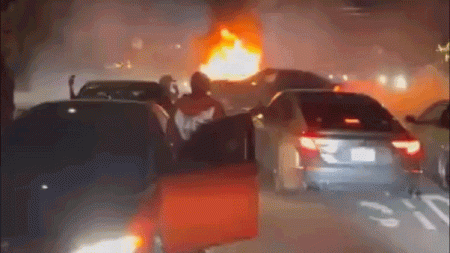The Strategic Significance of Donbas: Understanding the Pivotal Battleground in the Ukraine War
The Eastern Front: Why Donbas Has Become the Critical Theater in Ukraine’s Struggle
The rolling fields and industrial cities of eastern Ukraine’s Donbas region have transformed into one of the most fiercely contested territories in Europe’s largest land war since World War II. As Russian and Ukrainian forces clash across this resource-rich landscape, military analysts, political leaders, and international observers have increasingly recognized Donbas as the decisive battleground that may ultimately determine the outcome of the entire conflict. The region’s strategic, economic, and symbolic importance has placed it at the center of both military operations and diplomatic discussions, making it essential to understand why this particular area has become so crucial to the trajectory of the war in Ukraine.
The significance of Donbas extends far beyond its geographical boundaries, representing a complex intersection of historical claims, industrial capacity, and geopolitical ambitions. Comprised of the Donetsk and Luhansk oblasts (provinces), the region has been partially controlled by Russian-backed separatists since 2014, when conflict first erupted following Russia’s annexation of Crimea. What began as a localized insurgency evolved into a frozen conflict and eventually became the focal point of Russia’s full-scale invasion in February 2022. “The battle for Donbas will likely be remembered as the defining campaign of this war,” explains Dr. Kateryna Stepanenko, a military analyst specializing in Eastern European security. “Control of this territory represents not just a military objective but a fundamental test of both Russia’s ability to achieve its stated war aims and Ukraine’s capacity to defend its sovereignty against a larger adversary.”
Historical Context: From Industrial Heartland to Contested Territory
Long before artillery shells began falling across its cities and towns, Donbas held a special place in both Ukrainian and Russian consciousness. Historically known as the industrial heartland of Ukraine, the region developed into a powerhouse of coal mining, steel production, and manufacturing during the Soviet era. This industrial legacy shaped not only the physical landscape—dotted with factory towns, mining communities, and Soviet-era infrastructure—but also the cultural and demographic composition of the region, which features a significant Russian-speaking population alongside ethnic Ukrainians.
The complex identity of Donbas has made it particularly vulnerable to competing national narratives and political manipulation. Following Ukraine’s independence in 1991, the region maintained strong economic ties with Russia while gradually integrating into Ukraine’s broader national framework. However, this delicate balance was shattered in 2014 when, following the Euromaidan protests and the ousting of pro-Russian President Viktor Yanukovych, Russia-backed separatists seized government buildings in key Donbas cities. “The conflict that began in 2014 fundamentally altered the trajectory of Ukrainian statehood,” notes Professor Oleksandr Mykhnenko, a specialist in East European politics at Oxford University. “What we’re seeing now is the culmination of Russia’s long-standing refusal to accept Ukraine’s independent orientation toward Europe and the West. Donbas, with its significant Russian-speaking population and economic importance, became the perfect terrain for contesting these competing visions of Ukraine’s future.” This historical context has transformed what might otherwise be a purely military confrontation into an existential struggle over national identity, territorial integrity, and the right of Ukrainians to determine their own political destiny.
Strategic and Economic Assets: Why Both Sides Cannot Afford to Lose Donbas
The strategic value of Donbas extends well beyond symbolic or historical considerations. The region possesses substantial economic resources that both Ukraine and Russia view as vital to their long-term security and prosperity. Before the conflict began, Donbas contributed approximately 16% of Ukraine’s GDP, primarily through its coal mines, metallurgical plants, and chemical industries. The region holds an estimated 92% of Ukraine’s coal deposits and was home to many of its most productive heavy manufacturing facilities. This economic potential makes the territory an invaluable prize for Russia, which seeks to cripple Ukraine’s industrial capacity while simultaneously augmenting its own resource base.
From a purely military perspective, the topography and infrastructure of Donbas provide significant advantages to whichever force can secure control. The network of industrial facilities, urban centers, and transportation hubs creates a complex battlefield environment that favors defensive operations and makes large-scale maneuver warfare challenging. Military strategist Colonel (ret.) Viktor Kevlyuk explains: “Donbas represents a perfect storm of military challenges—urban combat in densely populated areas, industrial zones that can be converted into fortifications, and open terrain where artillery and long-range fires dominate. Whoever controls this territory effectively controls eastern Ukraine’s logistics networks, energy infrastructure, and access routes to Russia’s border regions.” Additionally, securing Donbas would give Russia a substantial buffer zone protecting its southwestern border and the annexed Crimean Peninsula, while allowing its forces to potentially threaten other key Ukrainian cities including Kharkiv, Dnipro, and Zaporizhzhia. For Ukraine, holding Donbas is equally crucial, as losing the region would not only sever it from vital economic resources but would also potentially expose central Ukraine to further Russian advances, dramatically complicating the country’s defensive posture and economic recovery prospects.
The Human Cost: Civilians Caught in the Crossfire of Europe’s Deadliest Conflict
Behind the strategic calculations and battlefield maneuvers lies the devastating human impact of the battle for Donbas. Once home to over 6.5 million people, the region has witnessed mass displacement, civilian casualties, and the systematic destruction of infrastructure since fighting began in 2014. The intensification of combat operations following Russia’s full-scale invasion has transformed many once-vibrant communities into abandoned ruins. Cities like Mariupol, Severodonetsk, and Bakhmut have become symbols of destruction, with entire neighborhoods reduced to rubble by relentless artillery bombardment and urban combat.
The humanitarian crisis has reached catastrophic proportions, with the United Nations estimating that over 90% of Donbas residents have either fled or been evacuated from the most heavily contested areas. Those who remain face acute shortages of food, medicine, clean water, and electricity, particularly during the harsh winter months. “What we’re witnessing in Donbas is the most severe humanitarian emergency in Europe since the Yugoslav wars,” states Maria Zakharova, emergency response coordinator for an international aid organization operating in eastern Ukraine. “Civilian infrastructure—hospitals, schools, water treatment facilities—has been deliberately targeted or severely damaged in the fighting, creating conditions that make normal life impossible.” The human suffering extends beyond immediate physical dangers to include psychological trauma, family separation, and the loss of livelihoods and community ties. Despite these immense challenges, remarkable stories of resilience have emerged from Donbas communities, with local volunteers, medical workers, and ordinary citizens organizing mutual aid networks, evacuation assistance, and emergency services under the most difficult circumstances imaginable. As one resident of Kramatorsk told journalists, “This is our home. Even as everything around us is destroyed, we find ways to help each other survive and maintain our humanity.”
International Dimensions: How the Battle for Donbas Shapes Global Responses to the Conflict
The struggle for Donbas has emerged as a central factor influencing international policy responses to the Ukraine war. For Western nations supporting Ukraine, the battle represents a critical test of their commitment to defending territorial integrity and democratic sovereignty against military aggression. The United States, European Union, and NATO allies have provided increasingly sophisticated weapons systems, financial assistance, and intelligence support specifically tailored to Ukraine’s defensive needs in the Donbas theater, including long-range artillery, air defense systems, and armored vehicles designed for the region’s challenging terrain.
Diplomatic initiatives to resolve the conflict invariably center on the status of Donbas, with territorial control of the region representing a major sticking point in any potential negotiated settlement. International security expert Dr. Jonathan Eyal of the Royal United Services Institute explains: “The Donbas question has become the barometer by which both sides measure success or failure in this war. Russia cannot claim victory without securing substantial control of the region, while Ukraine’s ability to defend or reclaim these territories has become symbolic of its broader resistance to Russian domination.” The battle has also forced a recalibration of global security arrangements, with Finland and Sweden abandoning decades of neutrality to seek NATO membership largely in response to Russia’s aggression in Ukraine, with the situation in Donbas serving as a powerful reminder of the consequences of territorial revisionism in Europe. Additionally, the fighting has accelerated global energy transitions as European nations seek alternatives to Russian fossil fuels, ironically diminishing the long-term economic value of the very coal and natural gas resources over which blood is being shed in Donbas.
The Road Ahead: Why Donbas Will Determine the Future of Ukraine and European Security
As the war continues, the outcome in Donbas will likely determine not just the future territorial configuration of Ukraine but also the broader security architecture of Eastern Europe. Military analysts increasingly view the region as the fulcrum upon which the entire conflict balances—a battlefield where Russia’s advantages in artillery and manpower clash directly with Ukraine’s tactical flexibility, Western weapon systems, and defender’s determination. The grinding war of attrition that has characterized recent fighting suggests that neither side can achieve a rapid or decisive victory, raising the prospect of a prolonged conflict with far-reaching consequences for regional stability.
Beyond the immediate military situation, the battle for Donbas has profound implications for Ukraine’s post-war reconstruction, national identity, and economic viability. Even if Ukrainian forces ultimately prevail, they will inherit a devastated landscape requiring massive investment to rebuild infrastructure, restore industrial capacity, and reintegrate displaced populations. Conversely, if Russia secures control, it would face similar reconstruction challenges while managing a potentially hostile local population and international isolation. “What happens in Donbas will reverberate across generations,” observes Professor Timothy Snyder, historian and Ukraine expert at Yale University. “We are witnessing a struggle that will determine not just who controls particular territories, but what kind of Europe emerges from this conflict—one where borders can be changed by force, or one where the principles of sovereignty and self-determination are upheld.” As Ukrainian and Russian forces continue to clash across the coal fields and factory towns of eastern Ukraine, the battle for Donbas remains not just a military campaign but a defining contest over the fundamental principles that will govern international relations in the twenty-first century.












